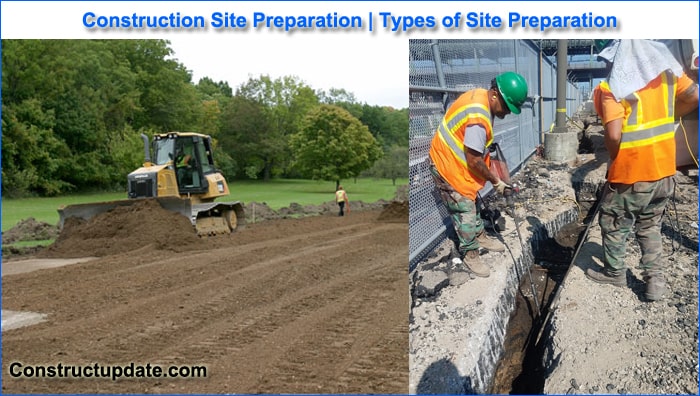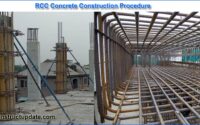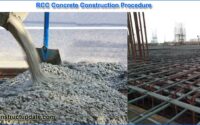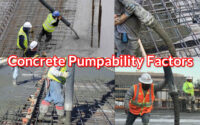What is Site Preparation | Construction Site Preparation Checklist?
All About Site Preparation
Professional site preparation is required before the start of any construction project in order to make sure that the area is secure and ready for usage. Failure to complete the basic and necessary site preparation and clearance procedures can cause workforce delays, inhibit the issuance of building licences, and harm the project’s overall strategy.
What exactly does the site preparation procedure entail? Read our comprehensive site preparation advice below.
What is Site Preparation?
Site preparation, or site clearance as it is more frequently known, is effectively starting again. It is an essential step in the building process and entails the removal of rubbish to guarantee that space or stretch of land is free from any risks and that the work may begin with a blank slate – before preparing the land for its intended purpose.

Types of Construction Site Preparation
A. Soil Testing and Report Investigation
Numerous differences in information are mapped by soil testing, including the type of foundation suitable for the site, agreements and related guidelines, rainfall likelihood, slope stability, subterranean water level, soil power, soil classification, and different characteristics provided in surveying reports. This soil contains vital information about the properties of the ground and how it will behave in the future.
B. Demolition of Old Structure
The existing structure must be demolished in order to prepare the construction site. Prepare a plan to destroy any old structures with the assistance of the demolition team. Demolition shall consist of, Which building on the property needs to be torn down?
What on-site structures require repairs rather than demolition?
If only a portion of the structure needs to be demolished, you must ensure that the remaining portion is safe and compliant with all applicable building codes.
For instance, the required precautions should be taken to support other structures connected to it if any section of the building needs to be repaired. To monitor any movement or cracking at this stage, a structural engineer or other qualified professional may be required.
In order to identify hazards, ensure safe disposal of materials, and adhere to legal requirements, systematic planning and effort will unquestionably help develop methods and procedures.
You can also need an asbestos clearance certificate if you’re demolishing a building.
C. Underground Service and Wire Mapping
It is important to take precautions to prevent service lines or subterranean wires from breaking or being disturbed while excavating and preparing construction sites in metropolitan areas, close to telecom services, or close to railway lines.
Therefore, before beginning any building excavation, you should, as a precaution, do an advance survey of underground resources or wire running below the ground.
To inform them of your work area, send letters to the telecom, natural gas supply, and electrical departments. When this division receives your letter, it checks to see if any subterranean service lines are present at your place of employment.
In order to prevent harm from work on the site, if they discover any wires beneath your work area, they will move them to another spot.
D. Site Surveying and Layout
It is now time to sketch out the building plan and determine the building’s precise location. A surveyor will identify the new building’s limits using survey pegs or other physical markers.
A land surveyor will also conduct engineering and informative surveys in addition to measuring the locations of pegs on a construction site.
While the second survey aids in gathering information about the terrain, drainage, and man-made characteristics of the area, further engineering surveys will ensure that the building structure is constructed in the right location and according to plan.
A site layout plan is necessary to have all of the pertinent information on hand, including the location of the new building, access roads for construction equipment, supply storage places, the placement of drainage systems, etc.
E. Site Clearing
Approximately three metres away from the building zone, any underground wood, underbrush, trees, and rocks must be removed as part of the preparation work for the construction site. If the quality of the topsoil is poor for structure, it should be removed and replaced with a suitable kind of soil. The site should be cleared so that it seems flat, clean, and undulating-free.
F. Site Excavation and Earthwork
The excavation process starts as the building plan is translated to the ground, and the earth is removed to the necessary depth for the foundation of the structure to be laid.
At the project site, a variety of machines is employed to excavate and move earth. The kind of equipment used for excavation depends on the soil type, the length of the distance the soil must be moved, the capacity of the soil site to support the load, and the accessibility of the site.
When rocks or other hard soil are present at the building site, blasting, drilling, and equipment including boulders, backhoes, shovels, and scoopers are used to extract and transport blasted and drilled materials.
G. Compaction of Construction Project Site
According to the IBC regulation, the soil at the foundation should be altered to the required rank, which is 90 percent or more of estimated dry solidity. Because it decreases agreement and fights against undesirable events, compacting the soil at the foundation’s ground is vital. The earth was contracting as the base of the foundation grew in strength, causing dirt to become porous and flexible, which is important for project site preparation.
H. Anti-Termite Treatment
Construction projects require anti-termite treatment because these pests can consume wood products and other cellulose-based foods. Termites can get inside wall cracks and bare walls.
I. Start Construction Work
After completing all project site preparatory tasks, we can start working on the main project. Site preparation is crucial for conducting outstanding knowledge safely and appropriately.
Construction Site Preparation Checklist
The checklists for construction preparation are listed below.
- The least amount of confusion or doubt will be possible thanks to the careful planning of the construction site.
- Always keep animals and children away from tools, materials, and building sites.
- For everyone’s safety, kindly tell your family and friends to visit the building site as needed.
- Talk to the insurance representative for your landlord and adhere to the project work’s guidelines.
- If necessary, instruct your supervisor on how to use the security system.
- Move the project site’s complete accessories.
- Offer a gap entry to the project site and any subsequent project locations, such as the plumbing and electrical ones.
- Each flower and tree you long to save and replant is separated.
- Point to and clearly label everything you want to hold that can be fixed.
- To protect from dust, cover any proprietary items from the building site as well as your furniture.
- Close the windows and doors permanently to help control the spread of dust.





